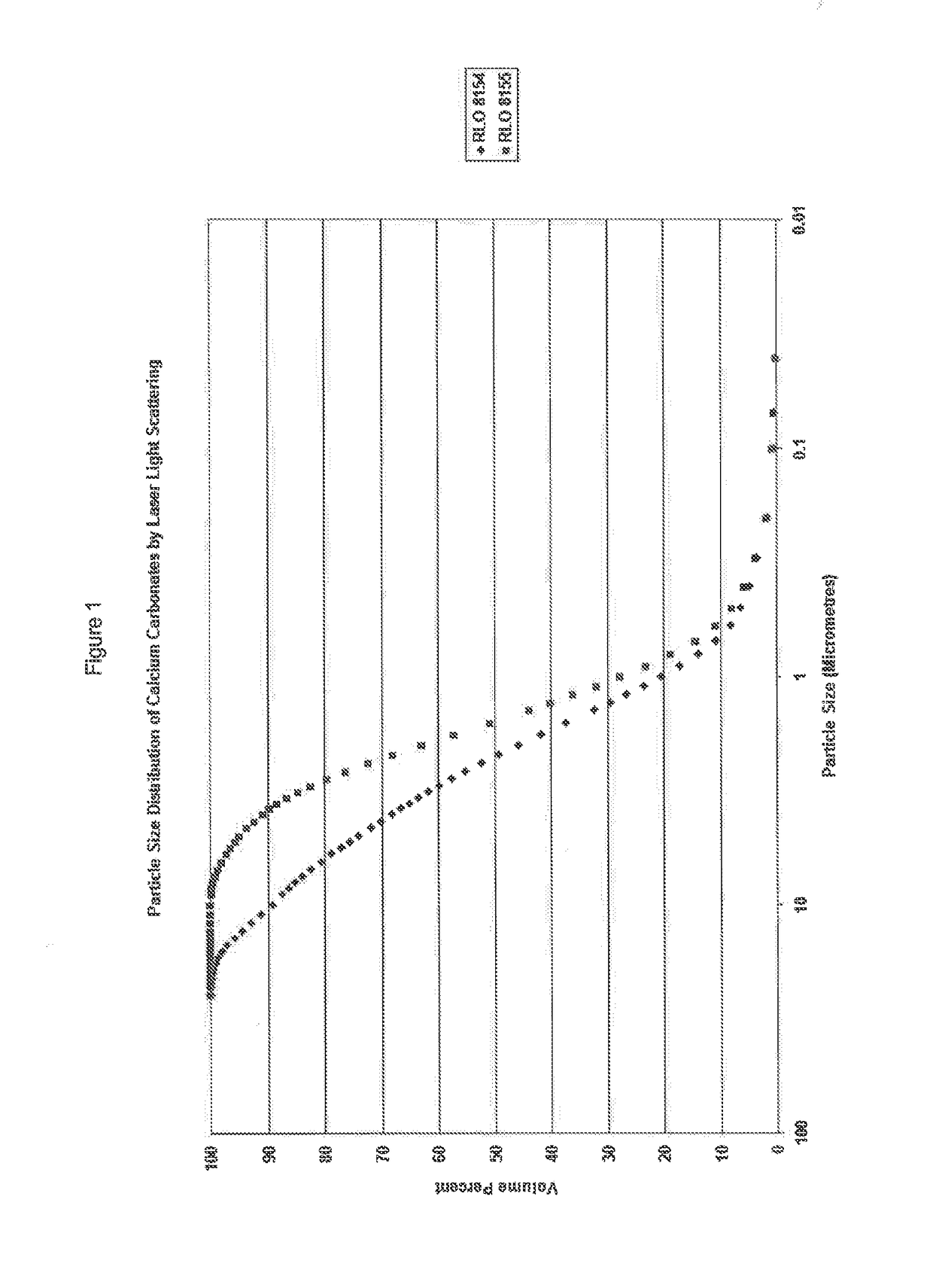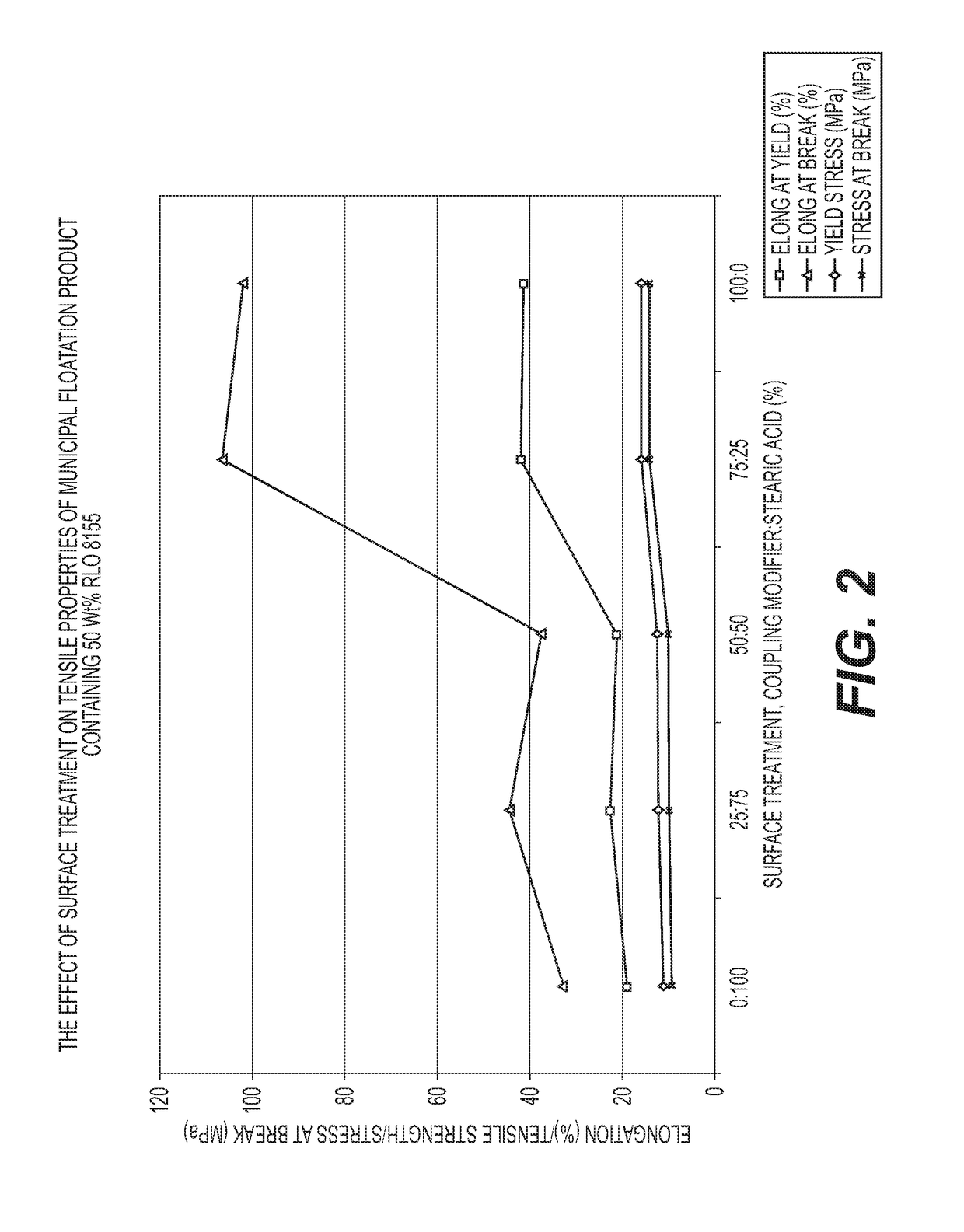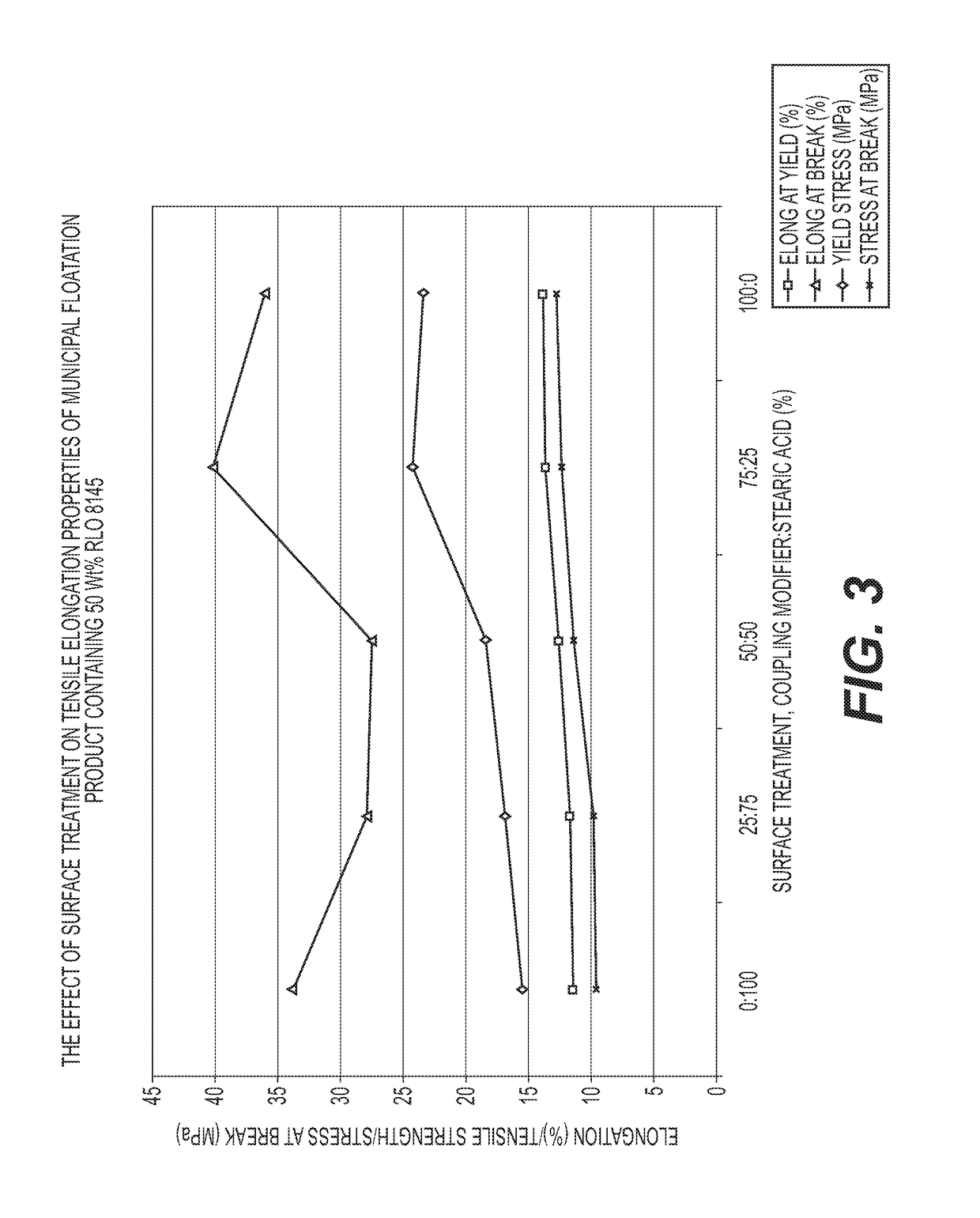Methods and compositions related to recycling polymer waste
a polymer waste and composition technology, applied in the field of polymer compositions, can solve the problems of contamination and soiling of polymer waste, adversely affecting the quality of the final recycled polymer, and the difficulty of recycling polymer waste material, and achieve the effect of improving the notched charpy impact property
- Summary
- Abstract
- Description
- Claims
- Application Information
AI Technical Summary
Benefits of technology
Problems solved by technology
Method used
Image
Examples
example 1
[0240]A dry ground calcium carbonate (designated RLO 8154) with a d50 of 2.2 μm and having the particle size distribution depicted in FIG. 1 was coated with a coupling modifier according to formula (1) above and stearic acid.
[0241]A wet ground calcium carbonate (designated RLO 8155) with a d50 of 1.6 μm and having the particle size distribution depicted in FIG. 1 was coated a coupling modifier according to formula (1) above and stearic acid.
[0242]The amount of surface treatment applied was calculated to give monolayer coverage on the surface.
[0243]RLO 8154 was coated with 0.47 Wt. % stearic acid or 0.4 Wt. % coupling modifier; RLO 8155 was coated with 0.9 Wt. % stearic acid or 0.6 Wt. % coupling modifier.
[0244]Intermediate coatings of (weight ratio) 25:75, 50:50 and 75:25 stearic acid:coupling modifier were also prepared.
[0245]The minerals were dried overnight in an oven at 80° C., and then coated using a Steele and Cowlishaw high intensity mixer heated to 80° C. Stearic acid was ad...
example 2
[0253]Samples of uncoated filler ((i) a wet ground calcium carbonate with a d50 of 0.8 μm and having a surface area of about 9 m2 / g), and (ii) a wet ground calcium carbonate with a d50 of 1.3 μm and having a surface area of about 5 m2 / g) were dried overnight at 50° C. Coating (with a coupling modifier according to formula (1) above) was carried out using a Steele and Cowlishaw mixer heated to 40° C. for 10 minutes. For each material 1.5 kg of mineral was placed in the mixer, and a quantity (see Table 5) of coupling modifier was injected into the mixer after the motor was started. After coating, the fillers were placed in an oven at 30° C. until needed.
[0254]Compounds were prepared using a blend of 75% HDPE:25% PP. Filler loadings of 10, 30 and 50 wt % were used. Dicumyl peroxide was added at 0.06 wt % on the polymer, and a sterically hindered phenolic antioxidant added at 0.1 wt %.
[0255]Compounds were prepared using a Coperion ZSK 18 twin-screw compounder, dried under vacuum at 50° ...
PUM
| Property | Measurement | Unit |
|---|---|---|
| density | aaaaa | aaaaa |
| temperature | aaaaa | aaaaa |
| temperature | aaaaa | aaaaa |
Abstract
Description
Claims
Application Information
 Login to View More
Login to View More - R&D
- Intellectual Property
- Life Sciences
- Materials
- Tech Scout
- Unparalleled Data Quality
- Higher Quality Content
- 60% Fewer Hallucinations
Browse by: Latest US Patents, China's latest patents, Technical Efficacy Thesaurus, Application Domain, Technology Topic, Popular Technical Reports.
© 2025 PatSnap. All rights reserved.Legal|Privacy policy|Modern Slavery Act Transparency Statement|Sitemap|About US| Contact US: help@patsnap.com



